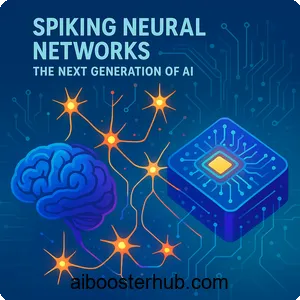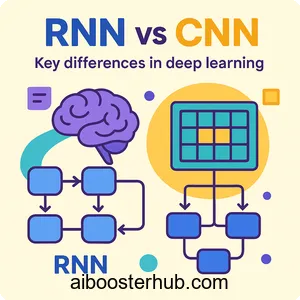ImageNet Competition: Revolutionary CNN Architectures
The ImageNet competition stands as one of the most transformative events in the history of artificial intelligence. This annual challenge didn’t just test the limits of computer vision—it fundamentally reshaped how we approach deep learning and neural network architecture design. The breakthroughs achieved through ImageNet classification have rippled across industries, from healthcare diagnostics to autonomous vehicles, making it a cornerstone moment in AI development.

Content
Toggle1. The ImageNet challenge and its impact on deep learning
What made ImageNet classification so challenging
ImageNet represents one of the largest visual databases ever assembled for computer vision research, containing over 14 million images organized into more than 20,000 categories. The ImageNet competition, formally known as the ImageNet Large Scale Visual Recognition Challenge (ILSVRC), focused on a subset of 1,000 object categories with approximately 1.2 million training images.
The challenge demanded systems that could accurately classify images into one of these 1,000 categories—a task that seems straightforward but proved extraordinarily complex. Consider the difficulty: distinguishing between 120 different dog breeds, identifying specific car models from various angles, or recognizing objects under different lighting conditions and backgrounds. The dataset’s diversity and scale made it the perfect proving ground for testing the limits of machine learning algorithms.
The pre-deep learning era
Before deep convolutional neural networks dominated the ImageNet competition, traditional computer vision approaches relied heavily on hand-crafted features. Researchers would manually design feature extractors based on domain knowledge—techniques like SIFT (Scale-Invariant Feature Transform), HOG (Histogram of Oriented Gradients), or SURF (Speeded Up Robust Features).
These methods achieved reasonable success on smaller datasets but struggled with ImageNet’s complexity. Error rates hovered around 25-28%, hitting a frustrating plateau. The manual feature engineering process was labor-intensive, required extensive expertise, and couldn’t capture the nuanced patterns hidden in millions of images.
Why the competition became a catalyst for AI innovation
The ImageNet competition created the perfect storm for breakthrough innovation. It provided:
- Standardized benchmarking: A common dataset allowed researchers worldwide to compare approaches objectively
- Public leaderboards: Competitive rankings motivated teams to push boundaries
- Large-scale data: Sufficient training examples to support increasingly complex models
- Academic prestige: Winning ImageNet became a career-defining achievement
This environment fostered rapid iteration and knowledge sharing, accelerating progress in ways that isolated research efforts never could.
2. AlexNet: The breakthrough that started the deep learning revolution
ImageNet classification with deep convolutional neural networks
The landscape changed dramatically when Alex Krizhevsky, Ilya Sutskever, and Geoffrey Hinton introduced AlexNet. Their approach to ImageNet classification with deep convolutional neural networks achieved an unprecedented top-5 error rate of 15.3%—a massive improvement over the previous year’s 26% error rate.
AlexNet wasn’t just incrementally better; it represented a paradigm shift. The architecture proved that deep neural networks, when properly trained, could automatically learn hierarchical feature representations far superior to hand-crafted alternatives.
Key architectural innovations
AlexNet introduced several critical innovations that became standard in modern CNN models:
ReLU activation function: Instead of traditional sigmoid or tanh activations, AlexNet used Rectified Linear Units (ReLU), defined as:
$$f(x) = \max(0, x)$$
This simple change dramatically accelerated training by mitigating the vanishing gradient problem. Gradients flow more easily through ReLU units, allowing deeper networks to train effectively.
Dropout regularization: To prevent overfitting, AlexNet employed dropout—randomly deactivating neurons during training with probability 0.5:
import torch
import torch.nn as nn
class AlexNetBlock(nn.Module):
def __init__(self, in_features, out_features):
super(AlexNetBlock, self).__init__()
self.fc = nn.Linear(in_features, out_features)
self.relu = nn.ReLU()
self.dropout = nn.Dropout(0.5)
def forward(self, x):
x = self.fc(x)
x = self.relu(x)
x = self.dropout(x)
return x
Overlapping pooling: Unlike standard pooling with stride equal to kernel size, AlexNet used overlapping pooling (stride 2, kernel size 3), which reduced overfitting and improved accuracy.
GPU acceleration: The architecture was specifically designed to leverage parallel computation on GPUs, splitting the network across two GPUs—a crucial innovation that made training feasible.
The architecture breakdown
AlexNet consisted of eight learned layers: five convolutional layers followed by three fully-connected layers. Here’s a simplified implementation of the convolutional portion:
class AlexNetConv(nn.Module):
def __init__(self, num_classes=1000):
super(AlexNetConv, self).__init__()
self.features = nn.Sequential(
# Conv1: 96 kernels of size 11×11×3
nn.Conv2d(3, 96, kernel_size=11, stride=4, padding=2),
nn.ReLU(inplace=True),
nn.MaxPool2d(kernel_size=3, stride=2),
# Conv2: 256 kernels of size 5×5×96
nn.Conv2d(96, 256, kernel_size=5, padding=2),
nn.ReLU(inplace=True),
nn.MaxPool2d(kernel_size=3, stride=2),
# Conv3: 384 kernels of size 3×3×256
nn.Conv2d(256, 384, kernel_size=3, padding=1),
nn.ReLU(inplace=True),
# Conv4: 384 kernels of size 3×3×384
nn.Conv2d(384, 384, kernel_size=3, padding=1),
nn.ReLU(inplace=True),
# Conv5: 256 kernels of size 3×3×384
nn.Conv2d(384, 256, kernel_size=3, padding=1),
nn.ReLU(inplace=True),
nn.MaxPool2d(kernel_size=3, stride=2),
)
The network’s depth (8 layers) was revolutionary at the time, demonstrating that deeper architectures could learn more sophisticated feature hierarchies.
3. VGG: Very deep convolutional networks for large-scale image recognition
The philosophy of depth and simplicity
Following AlexNet’s success, the Visual Geometry Group (VGG) at Oxford explored a fundamental question: could a simpler, more uniform architecture achieve better results through increased depth? Their work on very deep convolutional networks for large-scale image recognition answered with a resounding yes.
VGG networks abandoned AlexNet’s varied kernel sizes (11×11, 5×5, 3×3) in favor of a remarkably simple principle: use only 3×3 convolutional filters throughout the entire network. This design choice wasn’t arbitrary—two stacked 3×3 convolutions have an effective receptive field of 5×5, and three stacked 3×3 convolutions match a 7×7 receptive field, but with fewer parameters and more non-linearity.
VGG16 and VGG19 architectures
The VGG family includes several variants, with VGG16 (16 weight layers) and VGG19 (19 weight layers) being most prominent. Here’s the conceptual structure of VGG16:
class VGG16(nn.Module):
def __init__(self, num_classes=1000):
super(VGG16, self).__init__()
self.features = nn.Sequential(
# Block 1
nn.Conv2d(3, 64, kernel_size=3, padding=1),
nn.ReLU(inplace=True),
nn.Conv2d(64, 64, kernel_size=3, padding=1),
nn.ReLU(inplace=True),
nn.MaxPool2d(kernel_size=2, stride=2),
# Block 2
nn.Conv2d(64, 128, kernel_size=3, padding=1),
nn.ReLU(inplace=True),
nn.Conv2d(128, 128, kernel_size=3, padding=1),
nn.ReLU(inplace=True),
nn.MaxPool2d(kernel_size=2, stride=2),
# Block 3
nn.Conv2d(128, 256, kernel_size=3, padding=1),
nn.ReLU(inplace=True),
nn.Conv2d(256, 256, kernel_size=3, padding=1),
nn.ReLU(inplace=True),
nn.Conv2d(256, 256, kernel_size=3, padding=1),
nn.ReLU(inplace=True),
nn.MaxPool2d(kernel_size=2, stride=2),
# Block 4
nn.Conv2d(256, 512, kernel_size=3, padding=1),
nn.ReLU(inplace=True),
nn.Conv2d(512, 512, kernel_size=3, padding=1),
nn.ReLU(inplace=True),
nn.Conv2d(512, 512, kernel_size=3, padding=1),
nn.ReLU(inplace=True),
nn.MaxPool2d(kernel_size=2, stride=2),
# Block 5
nn.Conv2d(512, 512, kernel_size=3, padding=1),
nn.ReLU(inplace=True),
nn.Conv2d(512, 512, kernel_size=3, padding=1),
nn.ReLU(inplace=True),
nn.Conv2d(512, 512, kernel_size=3, padding=1),
nn.ReLU(inplace=True),
nn.MaxPool2d(kernel_size=2, stride=2),
)
self.classifier = nn.Sequential(
nn.Linear(512 * 7 * 7, 4096),
nn.ReLU(inplace=True),
nn.Dropout(0.5),
nn.Linear(4096, 4096),
nn.ReLU(inplace=True),
nn.Dropout(0.5),
nn.Linear(4096, num_classes),
)
Why uniformity matters in neural network architecture
The VGG architecture’s uniform design offered several advantages:
Easier analysis: The consistent structure made it simpler to understand how information flows through the network and which layers contribute most to performance.
Transfer learning efficiency: The homogeneous design proved excellent for transfer learning applications. Researchers could easily extract features from different depths or fine-tune specific blocks for new tasks.
Theoretical insights: The stacking of small filters demonstrated that network depth, not just filter size, drives performance. The mathematical relationship shows that \(n\) stacked 3×3 filters create an effective receptive field of size \((2n+1) \times (2n+1)\).
Computational trade-offs
While VGG achieved impressive ImageNet classification accuracy (7.3% top-5 error), the architecture’s simplicity came at a cost. VGG16 contains approximately 138 million parameters, making it memory-intensive and computationally expensive. The fully-connected layers alone account for the majority of these parameters—a limitation that later architectures would address.
4. Inception and GoogLeNet: Efficient multi-scale processing
The inception module concept
The Inception architecture (GoogLeNet) took a fundamentally different approach to the ImageNet competition. Rather than simply stacking layers deeper, the Google research team asked: what if a network could process information at multiple scales simultaneously?
The inception module applies different filter sizes (1×1, 3×3, 5×5) and pooling operations in parallel, concatenating their outputs. This design allows the network to capture features at various scales without committing to a single kernel size.
class InceptionModule(nn.Module):
def __init__(self, in_channels, ch1x1, ch3x3red, ch3x3, ch5x5red, ch5x5, pool_proj):
super(InceptionModule, self).__init__()
# 1x1 convolution branch
self.branch1 = nn.Sequential(
nn.Conv2d(in_channels, ch1x1, kernel_size=1),
nn.ReLU(inplace=True)
)
# 1x1 -> 3x3 convolution branch
self.branch2 = nn.Sequential(
nn.Conv2d(in_channels, ch3x3red, kernel_size=1),
nn.ReLU(inplace=True),
nn.Conv2d(ch3x3red, ch3x3, kernel_size=3, padding=1),
nn.ReLU(inplace=True)
)
# 1x1 -> 5x5 convolution branch
self.branch3 = nn.Sequential(
nn.Conv2d(in_channels, ch5x5red, kernel_size=1),
nn.ReLU(inplace=True),
nn.Conv2d(ch5x5red, ch5x5, kernel_size=5, padding=2),
nn.ReLU(inplace=True)
)
# Max pooling -> 1x1 convolution branch
self.branch4 = nn.Sequential(
nn.MaxPool2d(kernel_size=3, stride=1, padding=1),
nn.Conv2d(in_channels, pool_proj, kernel_size=1),
nn.ReLU(inplace=True)
)
def forward(self, x):
branch1 = self.branch1(x)
branch2 = self.branch2(x)
branch3 = self.branch3(x)
branch4 = self.branch4(x)
# Concatenate all branches along channel dimension
outputs = torch.cat([branch1, branch2, branch3, branch4], dim=1)
return outputs
Dimensionality reduction with 1×1 convolutions
A critical innovation in Inception was the strategic use of 1×1 convolutions for dimensionality reduction. Before applying expensive 3×3 or 5×5 convolutions, the architecture uses 1×1 convolutions to reduce the number of input channels.
Consider the computational savings: a 3×3 convolution on 256 input channels producing 256 output channels requires $256 \times 256 \times 3 \times 3 = 589,824$ parameters. By first reducing to 64 channels with a 1×1 convolution, then applying the 3×3 convolution, we need only $256 \times 64 \times 1 \times 1 + 64 \times 256 \times 3 \times 3 = 163,840$ parameters—a 72% reduction!
Auxiliary classifiers and deep supervision
GoogLeNet introduced auxiliary classifiers—additional softmax outputs attached to intermediate layers during training. These auxiliary branches serve two purposes:
Combating vanishing gradients: By injecting gradients at multiple depths, auxiliary classifiers help propagate learning signals to earlier layers, addressing the vanishing gradient problem in deep networks.
Regularization: The auxiliary losses act as a form of deep supervision, encouraging intermediate layers to produce discriminative features independently.
During inference, these auxiliary classifiers are discarded, making them a training-only mechanism.
Efficiency achievements
GoogLeNet won the ImageNet competition with a 6.7% top-5 error rate while using only 5 million parameters—dramatically fewer than VGG’s 138 million. This efficiency demonstrated that smart neural network architecture design could achieve superior accuracy with far less computational overhead, a principle that would influence all subsequent CNN models.
5. ResNet: Solving the depth problem with residual connections
The degradation problem in deep neural networks
As researchers pushed networks deeper, they encountered a puzzling phenomenon: beyond a certain depth, training accuracy would actually degrade. This wasn’t overfitting (where training accuracy is high but validation accuracy suffers)—even training error increased with depth.
This degradation problem seemed counterintuitive. Theoretically, a deeper network should at least match a shallower network’s performance by learning identity mappings in the extra layers. But standard deep convolutional neural networks struggled to learn even these simple identity functions when stacked too deep.
The residual learning framework
ResNet’s revolutionary insight was reformulating the learning problem. Instead of trying to learn an underlying mapping \(H(x)\) directly, residual blocks learn the residual function \(F(x) = H(x) – x\). The output becomes:
$$H(x) = F(x) + x$$
This simple addition—literally adding the input to the block’s output—made training extremely deep networks tractable. Here’s a basic residual block implementation:
class ResidualBlock(nn.Module):
def __init__(self, in_channels, out_channels, stride=1):
super(ResidualBlock, self).__init__()
# Main path
self.conv1 = nn.Conv2d(in_channels, out_channels, kernel_size=3,
stride=stride, padding=1, bias=False)
self.bn1 = nn.BatchNorm2d(out_channels)
self.relu = nn.ReLU(inplace=True)
self.conv2 = nn.Conv2d(out_channels, out_channels, kernel_size=3,
stride=1, padding=1, bias=False)
self.bn2 = nn.BatchNorm2d(out_channels)
# Shortcut path (identity or projection)
self.shortcut = nn.Sequential()
if stride != 1 or in_channels != out_channels:
self.shortcut = nn.Sequential(
nn.Conv2d(in_channels, out_channels, kernel_size=1,
stride=stride, bias=False),
nn.BatchNorm2d(out_channels)
)
def forward(self, x):
identity = x
# Main path
out = self.conv1(x)
out = self.bn1(out)
out = self.relu(out)
out = self.conv2(out)
out = self.bn2(out)
# Add residual connection
out += self.shortcut(identity)
out = self.relu(out)
return out
Why residual connections work
The effectiveness of residual connections stems from several factors:
Gradient flow: Residual connections create direct paths for gradients to flow backward through the network. The gradient of the identity function is 1, ensuring that gradients don’t vanish even in very deep networks. Mathematically:
$$\frac{\partial}{\partial x}(F(x) + x) = \frac{\partial F(x)}{\partial x} + 1$$
The “+1” term guarantees that gradients flow through at least the identity path.
Easier optimization: Learning residual functions \(F(x) = H(x) – x\) is easier than learning \(H(x)\) directly. If the optimal mapping is close to identity, the network needs only to learn small adjustments rather than the complete transformation.
Feature reuse: Residual connections enable feature reuse across layers, allowing information from earlier layers to bypass several layers and contribute directly to later representations.
ResNet variants and extreme depth
ResNet came in multiple depths: ResNet-18, ResNet-34, ResNet-50, ResNet-101, and ResNet-152. The deepest variant, ResNet-152, achieved a remarkable 3.57% top-5 error rate on ImageNet classification—surpassing human-level performance (estimated at 5%).
For deeper networks (ResNet-50 and beyond), the architecture uses “bottleneck” blocks with three layers (1×1, 3×3, 1×1 convolutions) instead of two, further reducing parameters while maintaining representational power.
class BottleneckBlock(nn.Module):
expansion = 4
def __init__(self, in_channels, mid_channels, stride=1):
super(BottleneckBlock, self).__init__()
# Bottleneck: reduce dimensions -> process -> expand dimensions
self.conv1 = nn.Conv2d(in_channels, mid_channels, kernel_size=1, bias=False)
self.bn1 = nn.BatchNorm2d(mid_channels)
self.conv2 = nn.Conv2d(mid_channels, mid_channels, kernel_size=3,
stride=stride, padding=1, bias=False)
self.bn2 = nn.BatchNorm2d(mid_channels)
self.conv3 = nn.Conv2d(mid_channels, mid_channels * self.expansion,
kernel_size=1, bias=False)
self.bn3 = nn.BatchNorm2d(mid_channels * self.expansion)
self.relu = nn.ReLU(inplace=True)
self.shortcut = nn.Sequential()
if stride != 1 or in_channels != mid_channels * self.expansion:
self.shortcut = nn.Sequential(
nn.Conv2d(in_channels, mid_channels * self.expansion,
kernel_size=1, stride=stride, bias=False),
nn.BatchNorm2d(mid_channels * self.expansion)
)
def forward(self, x):
identity = x
out = self.relu(self.bn1(self.conv1(x)))
out = self.relu(self.bn2(self.conv2(out)))
out = self.bn3(self.conv3(out))
out += self.shortcut(identity)
out = self.relu(out)
return out
6. Beyond ImageNet: The lasting impact on AI and computer vision
Transfer learning and pretrained models
Perhaps the most significant legacy of the ImageNet competition is the ecosystem of pretrained CNN models it created. These neural network architecture designs, trained on ImageNet classification, became the foundation for countless applications far beyond the original competition.
Transfer learning—using models pretrained on ImageNet and fine-tuning them for specific tasks—became standard practice. A model trained to distinguish between 1,000 ImageNet categories learns general visual features (edges, textures, object parts) that transfer remarkably well to other domains.
import torchvision.models as models
import torch.nn as nn
# Load pretrained ResNet
resnet = models.resnet50(pretrained=True)
# Freeze early layers
for param in resnet.parameters():
param.requires_grad = False
# Replace final layer for custom task (e.g., 10 classes)
num_features = resnet.fc.in_features
resnet.fc = nn.Linear(num_features, 10)
# Now only the final layer trains, while earlier layers provide
# learned features from ImageNet
This approach democratized deep learning, allowing researchers and practitioners with limited computational resources to build sophisticated vision systems by leveraging the knowledge distilled in ImageNet-trained models.
Architectural principles that endure
The ImageNet competition established design principles that continue guiding modern AI research:
Depth matters: From AlexNet’s 8 layers to ResNet’s 152, the progression showed that deeper networks capture more complex feature hierarchies.
Efficient computation: Inception’s multi-scale processing and use of 1×1 convolutions influenced architectures like MobileNet and EfficientNet, which optimize for mobile and edge deployment.
Skip connections: ResNet’s residual connections inspired DenseNet, U-Net, and transformer architectures, becoming a universal technique for training very deep networks.
Modular design: The block-based structure (Inception modules, residual blocks) promoted reusable components and made it easier to experiment with different configurations.
From image classification to multimodal AI
The deep convolutional neural networks developed for the ImageNet competition extended far beyond image recognition. These architectures became building blocks for:
Object detection: Faster R-CNN, YOLO, and other detectors use ResNet or VGG backbones for feature extraction.
Semantic segmentation: U-Net and DeepLab incorporate residual connections and multi-scale processing for pixel-level classification in medical imaging and autonomous driving.
Image generation: GANs and diffusion models leverage convolutional architectures for generating realistic images.
Video understanding: 3D convolutions and temporal attention mechanisms built upon 2D CNN principles for action recognition and video captioning.
Multimodal models: Vision transformers and CLIP combine CNN-derived insights with attention mechanisms, bridging vision and language understanding.
The shift to transformers and beyond
While the ImageNet competition concluded, its influence persists even as the field evolves. Vision transformers (ViTs) initially lagged behind CNN models on ImageNet but eventually matched or exceeded their performance with sufficient data and compute. Notably, ViTs adopted several lessons from CNNs: hierarchical processing (through patch embeddings of increasing size), inductive biases (through positional encodings), and skip connections (through residual paths in transformer blocks).
The competition also highlighted the importance of dataset quality and diversity. Subsequent efforts created more challenging benchmarks addressing ImageNet’s limitations—datasets with finer-grained categories, more balanced class distributions, and better representation of global diversity.
7. Conclusion
The ImageNet competition catalyzed a transformation in artificial intelligence that extended far beyond image classification. AlexNet demonstrated the power of deep convolutional neural networks, VGG showed that architectural simplicity and depth could coexist, Inception proved efficiency through clever design, and ResNet solved the fundamental challenge of training extremely deep networks. Each breakthrough built upon previous insights, creating a progression that pushed error rates from 26% to below human-level performance in just a few years.
These revolutionary CNN architectures didn’t just win competitions—they established foundational principles that continue shaping AI research today. The pretrained models, transfer learning paradigms, and architectural innovations from the ImageNet era remain indispensable tools for practitioners across industries. While transformers and other novel approaches continue advancing the field, the lessons learned from ImageNet classification with deep convolutional neural networks endure as essential knowledge for anyone working with modern AI systems.









